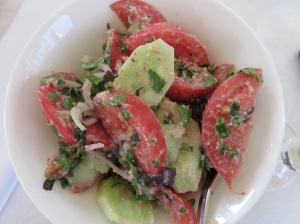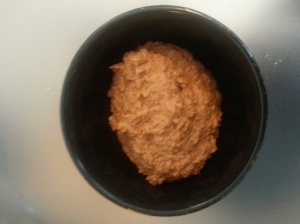There is a remarkable country in the Caucasus region, where rivers run with gold dust. Once upon a time, people would soak sheep’s fleeces in the quick-flowing waters, hoping to catch a fortune with their dampened wool traps. This is a country where for 8,000 years, the sun’s light has ripened acre upon acre of grapes and the soil in which the vines grow is seamed with precious, gleaming metals. A country with an ancient tradition of winemaking: grapes are placed into womb-shaped vessels made from clay, which are then planted into Mother Earth’s belly and left to gestate into rose-gold liquid – Georgian Qvevri wine.
I travelled to Georgia in late summer, after the weather had been cruel . Earlier in the year floods had struck its capital, Tbilisi. Two days before I arrived, vicious hailstorms had battered the countryside – damaging vines and spoiling grapes. But Georgia is a farming nation with a very long history, and its people know better than to micromanage agriculture, or to be surprised by the vagaries of nature. The Georgians carry on with their lives, they pray, they sing, they drink their wonderful wines and enjoy feasts known as ‘Supra,’ where vast numbers of people gather to celebrate with food, wine and polyphonic song. The country is truly beautiful, and the people charming. It seems right that Georgia should be a country famed for longevity, as such hospitable and kind people deserve to spend many years on our earth.
Georgia is famous for its wine, but its cuisine is wonderful too. Recipes are rustic and make use of the excellent local produce -fresh vegetables and young cheeses, and the walnut is a star ingredient. Walnuts trees flourish in Georgia -in fact most plants and crops seem to do well -a combination of fertile soil, sunshine and millennia of farming experience..
Georgians mix walnuts with chopped beetroot, or spinach, then mould them into delicious spheres of pâté. Walnuts are also used to stuff sweet peppers, or are spread onto slices of grilled aubergine. While I was in Georgia, I enjoyed a delicious walnut sauce which was poured over salad vegetables -such a change from boring old French dressing. This sauce features another Georgian treasure -marigold powder – made from the petals of golden flowers, which open each day with the rising of the sun and close at night when it sets. Marigold adds a floral bitter-sweetness to the walnuts in the paste, which if good and fresh (as walnuts always are in Georgia) do not taste bitter at all. And there could be health benefits to this unusual salad, aside from the happiness felt while eating it -marigold is supposed to still the trembling of the heart, draw evil humours out of the head and to strengthen the eyesight. Hard to argue with that.
November is possibly not the best month for tomatoes and cucumber -but the recent miserable and damp weather makes me crave the sunshine taste of these juicy and colourful vegetables. The main flavour will come from the walnut sauce, but be generous with the herbs -they add a perfect, fresh dimension and will do you good. I can’t promise that you will live as long as a Georgian if you make this salad -but you might just understand what makes the place and its cuisine so very lovely.
Georgian Golden Fleece Salad
1 large Spanish onion (or other mild onion) thinly sliced and soaked in cold water for about half an hour
6 vine tomatoes cut into wedges
1 cucumber cut into chunks. I leave the peel on, but you can peel and deseed the cucumber to make it more digestible
1 green capsicum, deseeded and cut into chunks (optional -I don’t hugely like peppers -but they do add a sweetness and crunch)
1 small bunch of purple basil leaves shredded
1 small bunch parsley, chopped.
.250g walnuts -the fresher the better
1 tsp. ground marigold flowers
2 tsp paprika (resist the temptation to use smoked -the sauce is delicious and light with ‘normal’)
1 tsp ground fenugreek
1 tsp ground coriander
3 cloves garlic
3 tbsp. white wine vinegar
cooled and boiled water.
Blitz the garlic and walnuts together in a mixer adding the vinegar to make a paste. Put into a mixing bowl and stir through the spices. Add water, stirring carefully and adding more until the mixture is a thinnish paste. Season to taste with a little sea salt.
Drain the onions and squeeze them in kitchen paper to remove as much liquid as possible. Place in a bowl together with the other ingredients. Pour over the walnut sauce and serve.


